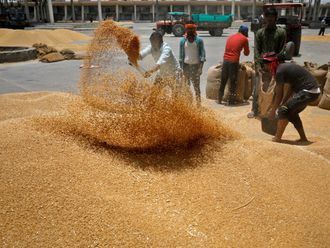London: Britain’s role in the partition of India and the subsequent violence that saw more than a million people killed is now rarely discussed in a country where multiple generations know of empire only from history books.
However, there is still a depth of feeling — and confusion — about the final days of the British Raj and independence on the subcontinent, as shown by the reaction to 2017 film Viceroy’s House, which offered a controversial, Downton Abbey-style view of Lord Mountbatten’s hurried exit strategy.
The director, Gurinder Chadha, admits “the events of 1947 are largely forgotten in the UK” — and, in terms of the horrors of partition, she is probably right. Instead, critics of the film’s portrayal of history focus on one thing — defending the reputation of the “greatest Briton of all-time”, Winston Churchill.
Controversy arises as the film — a Hindi-dubbed version of which is to be released this month — has drawn on a book called The Shadow Of The Great Game by Narendra Singh Sarila. This suggests that Cyril Radcliffe, who was tasked with drawing up the post-partition boundaries in Punjab and Bengal, was given a Churchill-approved map that effectively absolved Mountbatten of any blame for the post-independence chaos and massacres.
Critics have branded this “fake history” and accuse the film of taking a “breathtaking liberty with the historical record”.
“Whenever [Viceory’s House] gets involved in partition politics, it is historically and politically repugnant, promoting conspiracy theories and peddling vile falsehoods,” historian Andrew Roberts wrote in the Daily Mail.
“Worst, without any evidence, it blames Sir Winston Churchill ... of being responsible for the massacres of innocent men, women and children during the partition of India.
“It claims that, in an unwanted partition plan drawn up by Churchill, Pakistan was ‘conjured out of thin air’ solely to provide access to Middle Eastern oil for the scheming, evil British and ensure that Russia did not get its hands on the port of Karachi. [It is a] baseless Anglophobic conspiracy theory.”
Roberts added: “Throughout the film, blunders by Mountbatten are blamed on others, including British governors who are depicted as racist idiots.
“Most egregiously, Churchill, who was then leader of the opposition and so in no position to give executive orders to anyone, is depicted as appearing in a newsreel broadcast denouncing the transfer of power and sneering dismissively at ‘primitive Indians’. Not only was no such broadcast made, but Churchill never once used the word ‘primitive’ with regard to Indians in the year 1947.
“Above all, the emphasis on Churchill as the villain of this movie is just the latest example of the mania for making our greatest national hero into a villain, or presenting him as a joke figure.”
Ian Jack, a former South Asia correspondent, also gave a damning verdict.
“The film’s clear implication is that, when it comes to Britain’s share of the blame for the bloodshed of 1947, Churchill, not Mountbatten is the culprit,” he wrote in the Guardian.
“[But] by 1947, Churchill had been out of power for two years. Certainly, he was no friend to India — his behaviour during the Bengal famine in 1943 was notably callous — but I can find no historian who thinks this interpretation of events is anything other than a travesty.”
- The writer is a freelance journalist based in the UK












